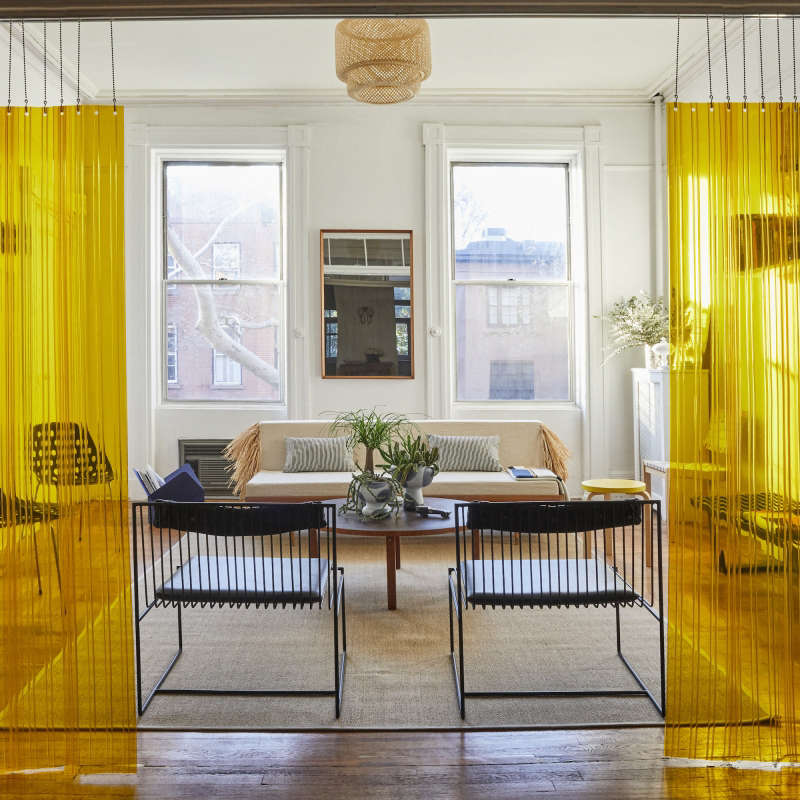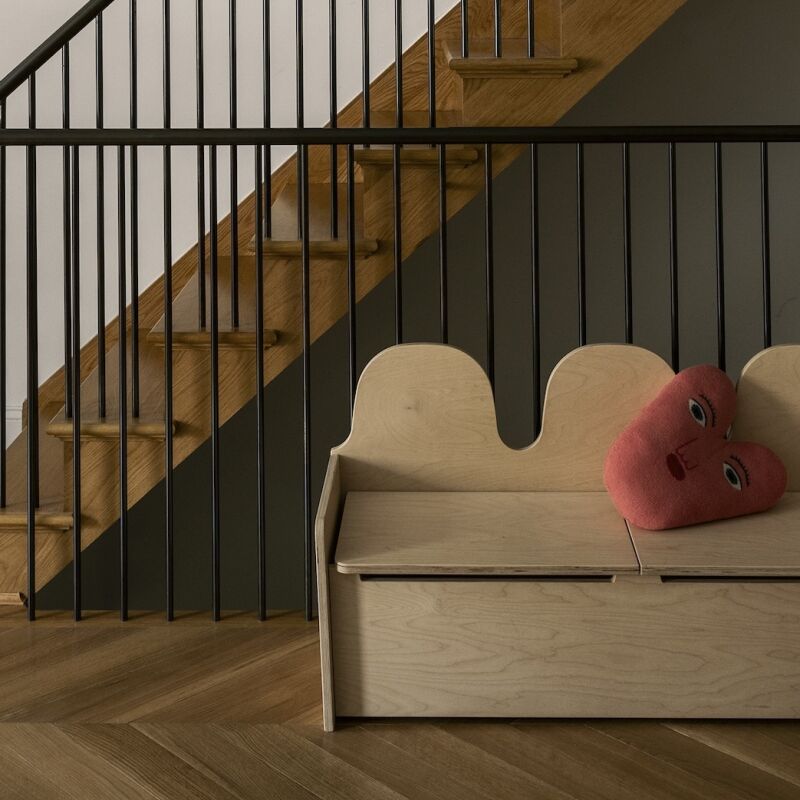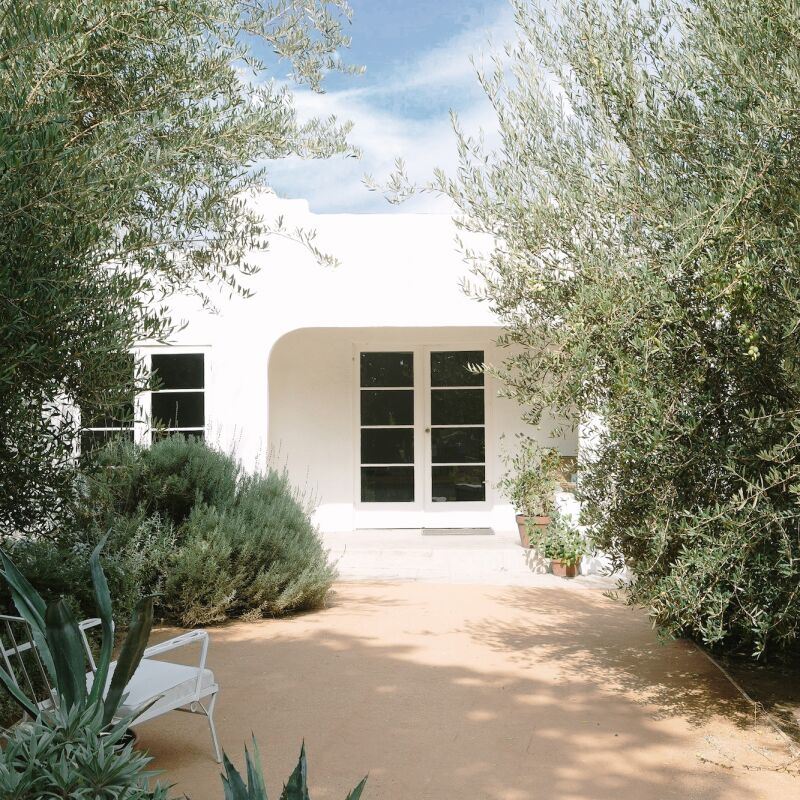A celebration of a Remodelista favorite: traditional sliding barn doors artfully used in interiors.
Whether they’re new or reclaimed, barn doors lend their rustic, practical sensibility to a space. They save room but are not tucked away like pocket doors, making a virtue out of their rugged beams and industrious hardware.
N.B.: See our post on Hardware: Barn Door Fittings for door hanging options.
Above: A San Francisco entryway by Feldman Architecture.
Above: In New York, a black sliding barn door in the entry hall of a TriBeCa loft by Schappacher White Architects. Photograph by Jason Lindberg.
Above: A bright barn door by Los Angeles architect Barbara Bestor. Photograph by Aaron Farley for Paper Magazine.
Above: Sliding barn doors at the Los Poblanos Historic Inn reference the compound’s agricultural origins.
Above: A rustic barn door in a lake house designed by Birmingham, Alabama–based Studio C Architecture.
Above: With a simple Shaker sensibility, this sliding barn door divides the dining and play spaces at the Seesaw Cafe in San Francisco.
Above: A leather handle used on a barn door by Alchemy Architects.
Above: An oversized reclaimed barn door in a studio by Patrick Davis Design.
Above: A bathroom alcove with interior sliding doors by Max Levy Architect.
Above: Barn doors in the Vermont home of the founder of Oughton Limited Bags.
Above: The door of this bathroom by the Brooklyn Home Company was sourced from a New Hampshire sheep barn. Photograph by Emily Gilbert Photography.
Above: A sliding barn door conceals a home office in a project by Greene Partners.
Above: The door to a bedroom in a Mill Valley, California, home by Artistic Designs for Living.
Above: Furniture maker Cliff Spencer crafts barn doors from reclaimed wine-barrel oak.
Looking for farm style in every room? Browse the 233 Farmhouse images in our Photo Gallery.
N.B.: This post is an update; the original story ran on March 18, 2010, as part of our European Sensibilities issue.
Frequently asked questions
What are sliding barn doors?
Sliding barn doors are a type of door that slide open and closed on a track system. They are typically made of wood and have a rustic feel, reminiscent of doors found on barns.
What are some benefits of sliding barn doors?
Sliding barn doors are a great space-saving option, as they don’t swing out like traditional doors. They also add a unique design element to a room and can be a great way to incorporate rustic or farmhouse-style décor.
What materials are sliding barn doors typically made of?
Sliding barn doors can be made of a variety of materials, including wood, metal, glass, and even reclaimed materials like old doors or shutters.
What is the installation process like for sliding barn doors?
Installation of sliding barn doors typically involves mounting a track system above the doorway, and then hanging the door from the track using rollers or wheels.
What are some design considerations when installing sliding barn doors?
When installing sliding barn doors, it’s important to consider the weight and size of the door, as well as the overall aesthetic of the room. You may also need to consider soundproofing or privacy solutions, as sliding barn doors typically don’t provide a complete seal like traditional doors.
Can sliding barn doors be used in any room of the house?
Sliding barn doors can be a great option for many rooms in the house, including bedrooms, bathrooms, closets, and even as dividers between living spaces. However, they may not be the best option for rooms where soundproofing or privacy is a priority.
Are there any disadvantages to using sliding barn doors?
One of the main disadvantages of sliding barn doors is that they may not provide as much privacy or soundproofing as traditional doors. They also require sufficient wall space to accommodate the track system, which may not be feasible in smaller or oddly-shaped rooms.






Have a Question or Comment About This Post?
Join the conversation